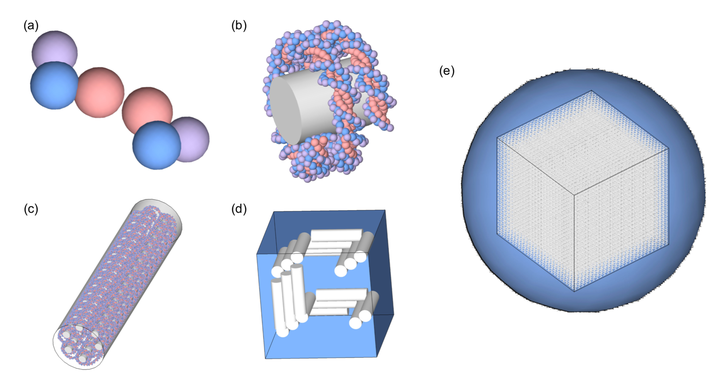Towards the characterization of neutron carcinogenesis through direct action simulations of clustered DNA damage
 Image credit: Logan Montgomery
Image credit: Logan MontgomeryAbstract
Neutron exposure poses a unique radiation protection concern because neutrons have a large, energy-dependent relative biological effectiveness (RBE) for stochastic effects. Recent computational studies on the microdosimetric properties of neutron dose deposition have implicated clustered DNA damage as a likely contributor to this marked energy dependence. So far, publications have focused solely on neutron RBE for inducing clusters of DNA damage containing two or more DNA double strand breaks (DSBs). In this study, we have conducted a novel assessment of neutron RBE for inducing all types of clustered DNA damage that contain two or more lesions, stratified by whether the clusters contain DSBs (complex DSB clusters) or not (non-DSB clusters). This assessment was conducted for eighteen initial neutron energies between 1 eV and 10 MeV as well as a reference radiation of 250 keV x-rays. We also examined the energy dependence of cluster length and cluster complexity because these factors are believed to impact the DNA repair process. To carry out our investigation, we developed a user-friendly TOPAS-nBio application that includes a custom nuclear DNA model and a novel algorithm for recording clustered DNA damage. We found that neutron RBE for inducing complex DSB clusters exhibited similar energy dependence to the canonical neutron RBE for stochastic radiobiological effects, at multiple depths in human tissue. Qualitatively similar results were obtained for non-DSB clusters, although the quantitative agreement was lower. Additionally we identified a significant neutron energy dependence in the average length and complexity of clustered lesions. These results affirm that many types of clustered DNA damage contribute to the energy dependence of neutron RBE for stochastic radiobiological effects and that the size and constituent lesions of individual clusters should be taken into account when modeling DNA repair. Our results were qualitatively consistent for (i) multiple radiation doses (including a low dose 0.1 Gy irradiation), (ii) variations in the maximal lesion separation distance used to define a cluster, and (iii) two distinct collections of physics models used to govern particle transport. Our complete TOPAS-nBio application has been released under an open source license to enable others to independently validate our work and to expand upon it.